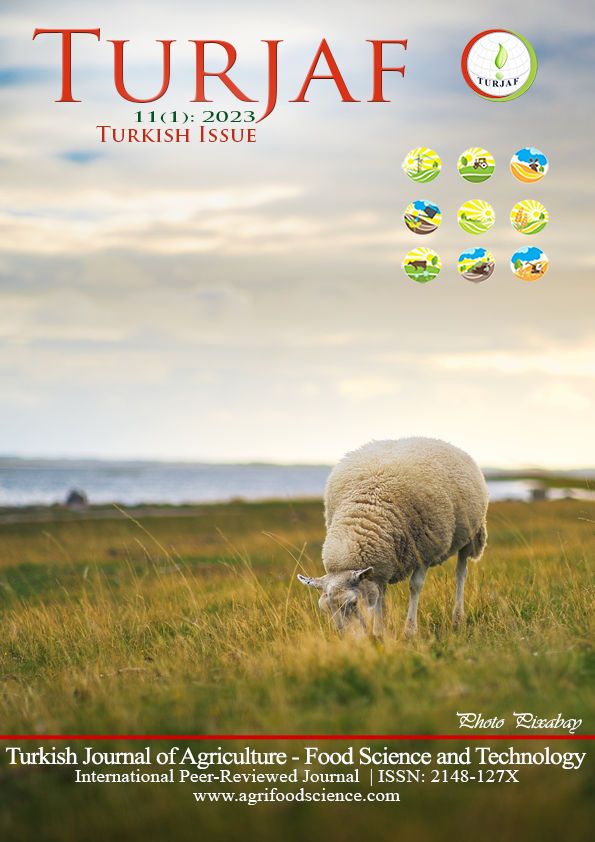The Effect of Feeding with Low-Energy Diet in Dry Period on Postpartum Metabolic Disorders and Milk Yield in Dairy Cow
DOI:
https://doi.org/10.24925/turjaf.v11i1.166-173.5791Keywords:
Low-energy, Metabolic disorders, Dry period, Dairy cow, Milk yieldAbstract
This study was carried out to determine the effect of diets with different energy content in the dry period on milk yield at the beginning of lactation and the incidence of some metabolic disorders in Holstein Dairy cattle. In the study, 800 Holstein breed dairy cattle in the dry period, whose lactation number averages are close to each other, were used. The animals were divided into two groups of 400 each and fed with two different diets during the first 39 days of the dry period (late dry period). The control group with the first 400 animal was fed with a diet with a NEL energy value of 1.34 (Mcal/kg DM), while the group with the second 400 animals was fed with a low-energy ration with a NEL energy value of 1.07 (Mcal/kg DM). In the last 21 days of the dry period and in the first 90 days of lactation, both groups were fed with similar diets. According to the results obtained from the study, while milk yield was higher in the group fed with normal energy control diet in the dry period in the second lactation, it was higher in the group fed with low energy diet in the third lactation. There was no difference between the groups fed with two different diets in subsequent lactation periods. Although hypocalcemia and septic metritis were not significantly affected by the diets, there was a numerical decrease in the incidence in the group fed with low energy diet. Abomasum displacement was significantly decreased in the low-energy diet group. Although the incidence of ketosis+2 increased numerically in the group fed with a low-energy diet, the incidence of ketosis+1 was significantly higher. As a result, it can be said that low-energy diets in the dry period can help reduce the incidence of problems such as abomasum displacement, hypocalcemia and septic metritis without adversely affecting milk yield in the periods after the second lactation.Downloads
Published
31.01.2023
How to Cite
Koç, Y., & Cufadar, Y. (2023). The Effect of Feeding with Low-Energy Diet in Dry Period on Postpartum Metabolic Disorders and Milk Yield in Dairy Cow. Turkish Journal of Agriculture - Food Science and Technology, 11(1), 166–173. https://doi.org/10.24925/turjaf.v11i1.166-173.5791
Issue
Section
Research Paper
License
This work is licensed under a Creative Commons Attribution-NonCommercial 4.0 International License.









